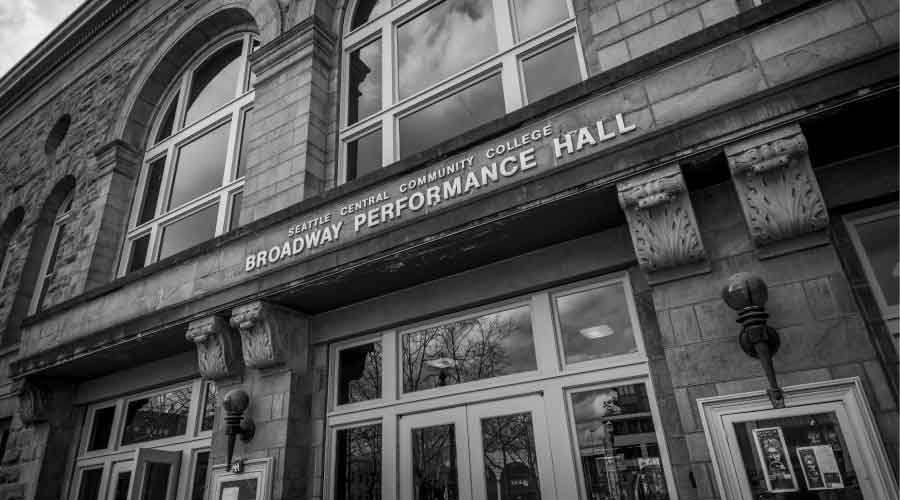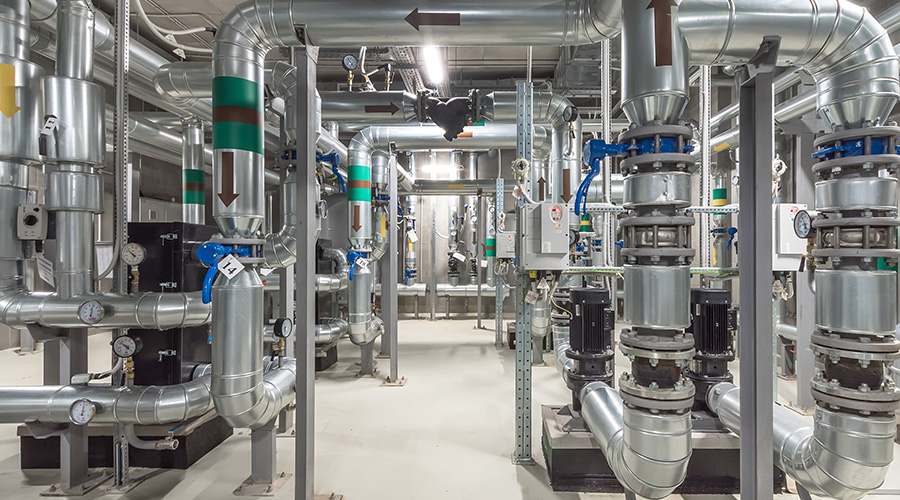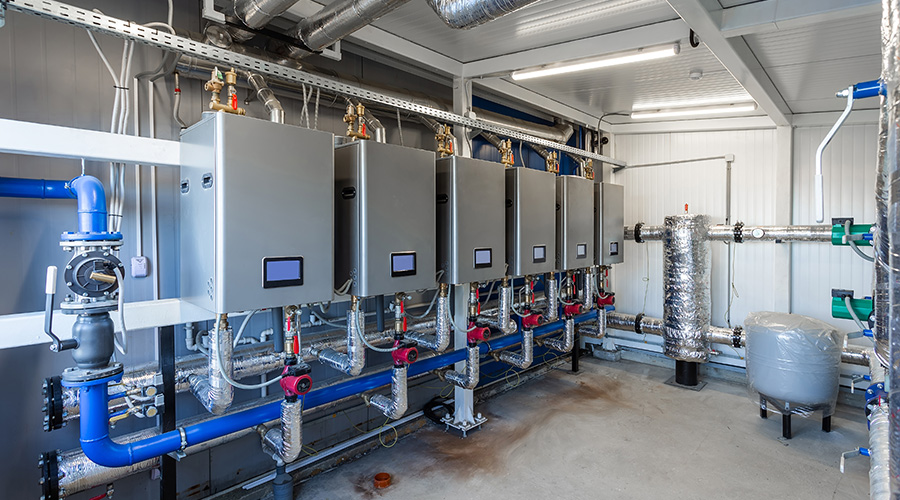Seattle Central College Embraces Sustainability
Seattle Central is converting its steam-based HVAC system into an environmentally friendly system that uses electric heat pumps to service campus facilities.
By Dave Lubach, Managing Editor
OTHER PARTS OF THIS ARTICLEPt. 1: This Page
It was the perfect storm situation for Seattle Central College. Its buildings were growing old, deferred maintenance amounts were escalating well into the millions, and city and state environmental policies were changing or about to change.
Throw into the mix more environmentally conscious young people who are considering campus climate impact as one factor in deciding where to attend college, and it was time for Seattle Central to address its aging, steam-based HVAC system.
“Some of the systems that have been in the buildings that are considered essential to our mission are now out of date,” says Lincoln Ferris, Seattle Central’s interim vice-president of administrative services. “In the case of our steam supply system, a catastrophic failure of the steam supply could shut down the campus for weeks, if not more, depending on the severity of the break.
“The bigger picture I've been trying to take a look at is the overall efficiency, which is how can we make better use of the space we have? How can we be more efficient with the budget we have relative to energy consumption?”
Mounting challenges
Seattle Central started exploring upgrades of its HVAC system about four years ago. Officials briefly considered replacing the system with a more energy efficient natural gas system but eventually rejected the idea.
“The facilities director was looking down at the price and sort of saying that natural gas was still dirt cheap, (so) why not just put natural gas boilers in to replace the steam?” Ferris says. “My answer to that was because you and I both know that state policies and city policies are going to discourage, if not outright ban, the use of fossil fuel-based equipment.”
Ferris’ foresight became reality earlier this year when Washington became the first state to mandate that all new buildings use all-electric space heating and hot water systems. While Seattle Central wasn't planning new construction, the industry was trending toward electric systems.
Like many other states, as well as universities and colleges, Washington has revised energy regulations for commercial buildings to cut energy use and reduce greenhouse gas emissions. The state revised its codes to require a 70 percent reduction of energy consumption in non-residential buildings by 2031.
“My argument has been that we know that both the city and state’s policies relative to fossil fuel general use is going in the same direction and therefore, (so) it just behooves us to, rather than running a risk with a time lag it takes to institute these systems, let’s plan on something that is as green as we can make it,” Ferris says.
Adding to Seattle Central’s challenges was the age of many campus buildings. While the state school is approaching its 60th year of operation, the campus has many older buildings, including at least two that are more than 100 years old. Many buildings and the HVAC system operating them were outdated, creating a mountain of deferred maintenance — $12-14 million for the main campus building alone.
For a campus that has converted to LED lighting to become more sustainable and energy efficient, the next step was to reduce carbon emissions by addressing its outdated HVAC system.
A unique approach
College age students embrace tackling climate change, and a university or college’s approach to reducing greenhouse gases or achieving net-zero carbonization on campus can influence their choices for higher education. Seattle College took these considerations to heart when deciding how to approach their HVAC upgrade.
“From a marketing standpoint, I think younger generations of students are much more cognizant of whether their institution is responsible or not responsible,” Ferris says. “Is this a green institution that is attempting to reduce its carbon footprint? As time goes by, students will be ranking what school they’re going to go to based much more upon whether it meets their lifestyle values and much less about was this the cheapest way to get to where I want to be?”
Following the passage of the 2019 Washington State Clean Buildings Bill, the college’s leaders performed a feasibility study about whether to replace its aging steam-heating HVAC system, which was at the end of its expected life. The act mandates that facilities lower costs and pollution from fossil fuel consumption in all state buildings and replace steam with low-carbon heating and cooling systems that will cut the college’s greenhouse gas footprint.
The solution for college officials was to pursue the creation of an EcoDistrict through a partnership with McKinstry, a consulting, construction, energy and facility services firm. According to a press release on the firm’s collaboration with Seattle Colleges, an EcoDistrict establishes a shared-energy standard for buildings that eliminates unnecessary waste, and zero-carbon efforts are accelerated.
“The project is critical to the college achieving several key goals,” Ferris says. “First, the college is committed to sustainability and achieving the state’s goal of reducing our greenhouse gas footprint by 50 percent. We expect the EcoDistrict to be the linchpin for switching away from fossil-fuel generated heating and cooling.
“Second, we desire a predictable and reliable cost for our utilities. The EcoDistrict has the promise of levelling our energy consumption and central plant maintenance costs into one per square foot assessment. Third, we face a deferred maintenance backlog in the tens of millions of dollars for our existing central plant and associated steam piping. The EcoDistrict will allow us to address this in a comprehensive, one-time capital investment.”
Work on the project is expected to begin later this year, with a goal of completion by summer 2024. The EcoDistrict system will generate 160-degree heat to the water supply using commercially available air-water and water-water heat pumps, with the potential expansion to serve neighboring buildings. The project also upgraded aging buildings to electric heat pump systems without removing existing hot water coils or HVAC configurations to help reduce costs.
“The system we’re putting in place at Seattle Central focuses on achieving a resilient and decarbonized result by focusing on reducing the energy that we use, and then reclaiming energy that in the past has probably been treated as a wasted energy,” says Dan Stevenson, McKinstry’s director of project development for EcoDistricts. “In order to get there, we looked at the heating system, which was entirely steam-based and has been since the inception of the college. The condition really drove the need to think about a deep, deep level at minimum retrofit of the system.
“When you look at conventional systems, like that steam system, that deep level of retrofit is one way to go. But if you have the goal of decarbonization, you’re never going to get there by simply retrofitting the steam systems. That’s where we decided to leapfrog and go to a condenser water loop heat pump-based approach to the design.”
Stevenson further explains how the process works,: “The condenser water loop allows us to put heat pumps on to that loop to extract heat from the condenser water and use it to heat the terminal units throughout campus that were heated with the steam system. That’s how we use heat pump technology to interface with systems that are already there – the terminal units to distribute throughout the building. On the supply side, we use heat pumps to generate that heat and put it into the condenser water or to charge thermal storage systems that later can allow the heat to be extracted into the condenser water.”
Building support
Securing funding for public projects is never easy, even if the results mean improved energy efficiency. South Central secured a $755,000 Clean Energy Fund grant from the state to establish the EcoDistrict, so Ferris and his team had to obtain the remainder of the funding for the project and sell leadership on its long-term benefits.
“In our area of facilities management, one of the challenges for managers is trying to sell your leadership on projects that down the road are going to be beneficial both environmentally and financially, and in education, that’s not always an easy sell,” Ferris says.
McKinstry has partnered with Seattle Colleges for several projects, and upon completion of the project, its transition service group will help the college in its initial efforts to maintain and operate the system.
Once completed, the EcoDistrict will put Seattle College on the cutting edge of cooling and heating technology, and its steam system will be a distant memory.
“There are a lot of ways to get this done, a lot of different combinations of technology that you can use,” Stevenson says. “I’d say Seattle Central is a model approach for an urban campus that has minimal green space. In other cases, we might have employed geothermal or ground source heat pump solutions, but in this case, there wasn’t the real estate to do that. We went the air source heat pump approach, which is just a way for any campus in any environment to be able to electrify the heat process without the brute force of electric resistance heat through a boiler or something to make it happen.”
Dave Lubach is managing editor for the facilities market. He has seven years of experience covering facilities management and maintenance.
Related Topics:












